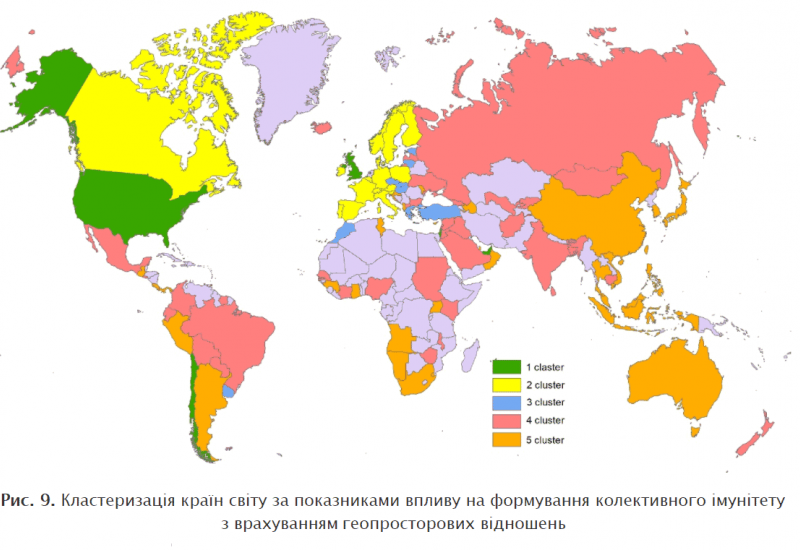A recent study - ‘When will the COVID-19 pandemic end?’ by McKinsey & Company - reported that mass vaccination of the population is a core tool in overcoming the COVID-19 pandemic. Based on the results of McKinsey, researchers of Igor Sikorsky Kyiv Polytechnic Institute and Lev Gromashevsky Institute of Epidemiology and Infectious Diseases of the NAMS of Ukraine have studied trends in vaccination and progress toward a transition to normalcy in various countries around the world. They grouped countries into five clusters.
The first cluster includes the United States, Israel, the United Kingdom, and the United Arab Emirates. These countries achieved the highest vaccination rates; their average vaccination rate exceeds 60%; it accordingly approached herd immunity at the end of the second - beginning of the third quarter of 2021.
The second cluster includes most Western Europe and Canada; herd immunity is more likely at the end of 2021, with a transition toward normalcy in early 2022.
The third cluster is Turkey, some Central European countries, Morocco and Uruguay. In these countries, the vaccination rate does not exceed 20%. The countries ensure strict quarantine standards, yet the daily cases continue to rise. These countries are likely to reach herd immunity closer to mid-2022.
The fourth cluster covers countries with a new wave of cases and slow vaccination. This group includes Ukraine, Russia, Moldova, Georgia, Brazil, Mexico, India, and other countries. The average vaccination rate for this cluster is 4.5%, Ukraine - 1.8%. Given the current vaccination rate, the risks to these timelines are real—herd immunity may not be achieved by the end of the year 2022 and reach herd immunity only in 2023.
The fifth cluster includes Australia, China, Argentina, and Southeast Asian countries with relatively few cases but at the same time slow vaccination rates. Overcoming the pandemic in these countries may delay the timeline by the end of 2022 and the beginning of 2023.
The study reports that the vaccine gap, low rates of vaccination (1.8% per dose as of 01.05.2021), and non-compliance with the quarantine restrictions regard Ukraine as the countries which delay the transition to normalcy and herd immunity. Our country gains immunity mainly through natural infectioning with corresponding high mortality; experiences economic and social stagnation; is isolated from countries that have achieved control of the epidemic situation. Under these conditions, researchers recommend the following steps:
• keep to all anti-epidemic measures with enhanced epidemiological surveillance of COVID-19;
• establish vaccination priorities for all previously uninfected persons with the shortest vaccination schedule. The minimum interval between the first and second doses should be four weeks. At the same time, Ukraine currently has a maximum interval of twelve weeks, which may reduce the expected effectiveness of vaccination;
• given that sufficient vaccine doses are available, it is necessary to vaccinate to all comers;
• reconsider vaccination of patients recovered from COVID-19 at the present stage, reducing it to 1 dose by booster type (booster dose to increase immunity against COVID-19).

